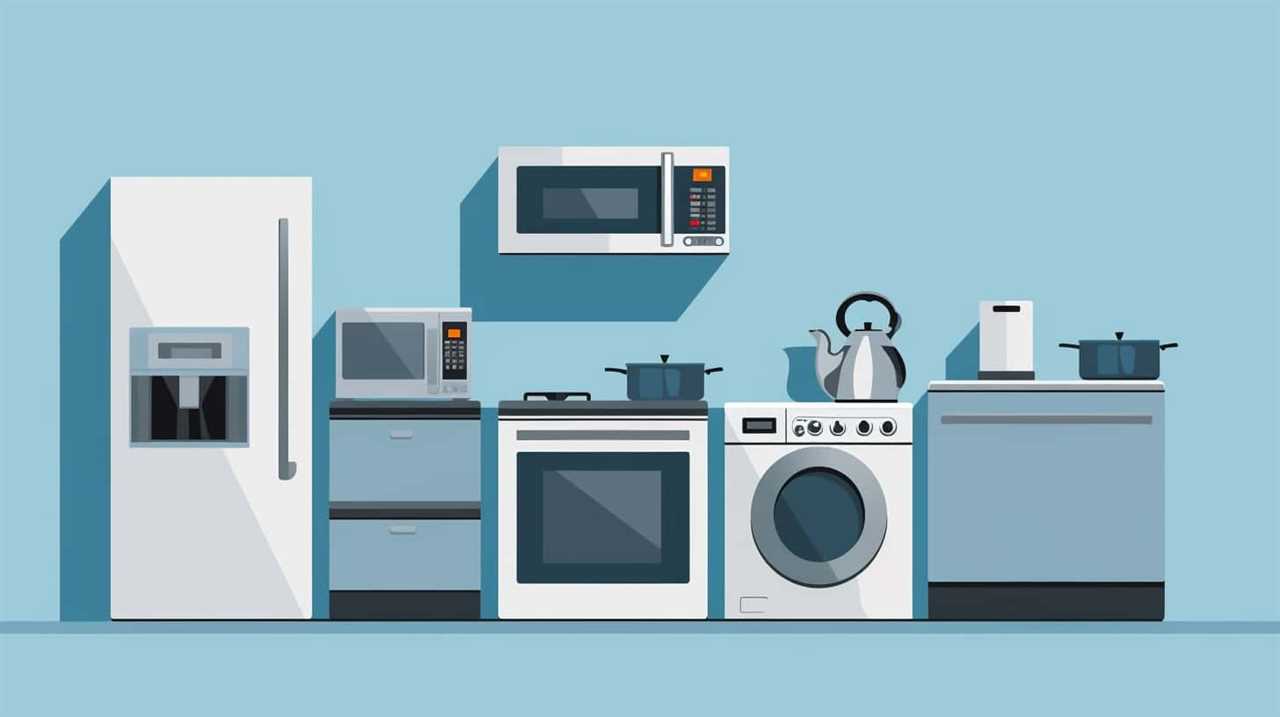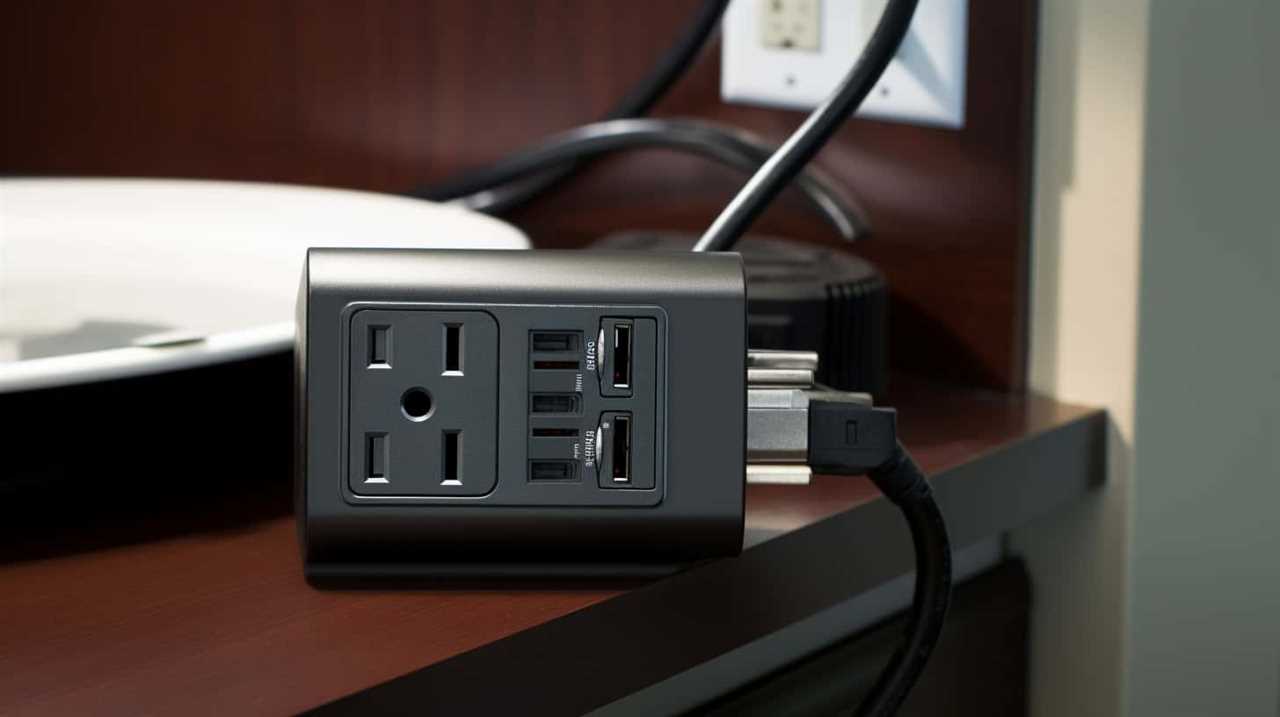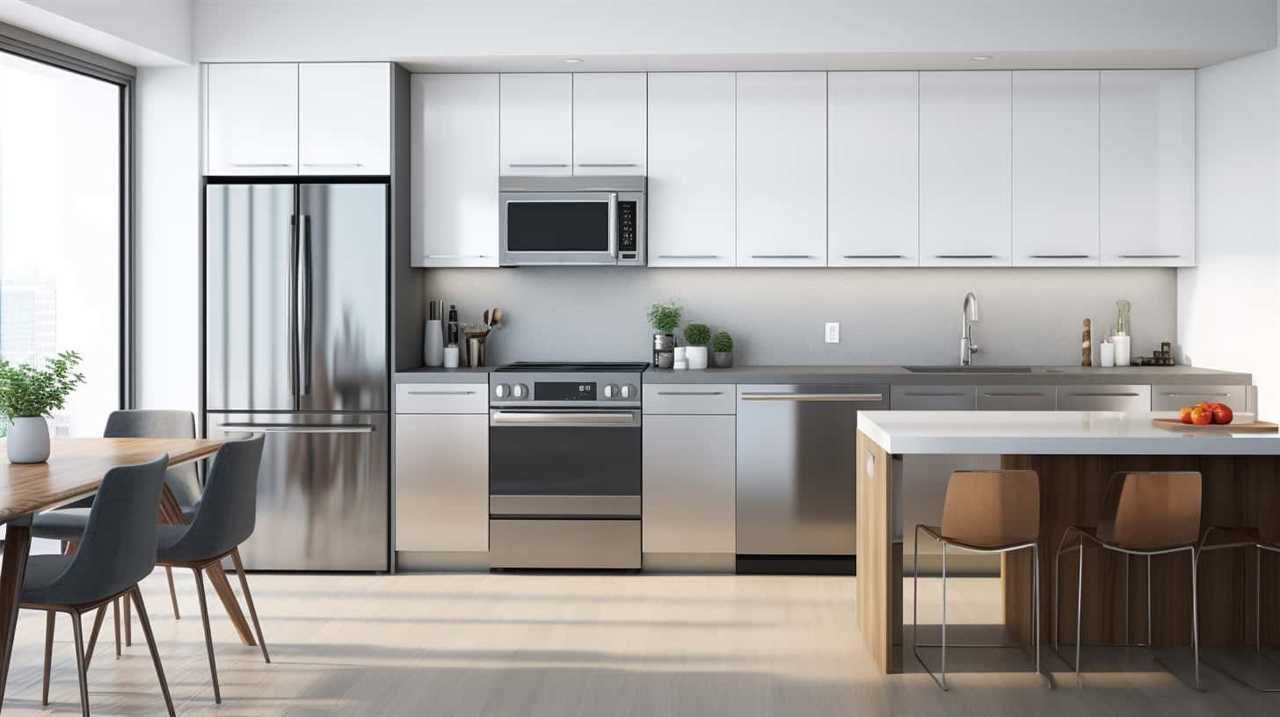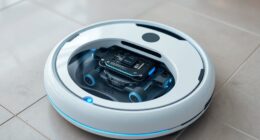When we explore the realm of software, we frequently come across the term ‘appliance.’ So, what exactly is an appliance in the context of software?
Well, it’s more than just a household item. In fact, it’s a powerful tool that simplifies the way we use software.
In this article, we’ll explore the definition, benefits, and key features of software appliances.
So, let’s hop on this journey and unravel the wonders of software appliances together!

Key Takeaways
- Software appliances are pre-configured software systems designed for specific tasks or functions.
- They streamline processes, simplify complex tasks, and eliminate the need for extensive setup and configuration.
- Software appliances ensure consistency and reliability in performing specific functions, increasing efficiency and productivity.
- They provide increased security measures, cost savings, and built-in management tools, but may have limited customization and scalability.
Definition of Software Appliance
A software appliance is a pre-configured software system designed to perform a specific task or function. It’s a self-contained unit that includes the necessary software, operating system, and configuration settings to carry out its designated purpose.
This definition highlights the importance of software appliances in streamlining processes and simplifying complex tasks. By providing a ready-to-use solution, software appliances eliminate the need for extensive setup and configuration, saving time and effort for users.
Additionally, these appliances ensure consistency and reliability in performing specific functions, as they’re built with the necessary components and settings already in place. This makes them highly valuable for individuals and organizations seeking efficiency and effectiveness in their operations.
The definition and importance of software appliances make them essential tools for achieving mastery in various domains.

Benefits of Using Software Appliances
Using software appliances offers several benefits.
Firstly, it increases efficiency and productivity by providing ready-to-use solutions that eliminate the need for complex configurations or customizations. This allows teams to focus on their core tasks instead of spending time on installation and setup.
Additionally, software appliances simplify installation and maintenance processes, making it easier to deploy and manage applications, updates, and patches. This reduces downtime and ensures that the software is always up to date, improving overall system performance.
Increased Efficiency and Productivity
How can software appliances enhance our efficiency and productivity?

By incorporating software appliances into our workflows, we can experience increased collaboration and streamlined processes. These appliances are designed to automate tasks and simplify complex processes, allowing us to focus on more important aspects of our work.
With software appliances, we can easily share information and collaborate with team members, eliminating the need for time-consuming and inefficient manual processes. By streamlining our workflows, we can save time and effort, ultimately increasing our productivity.
Additionally, software appliances often come equipped with analytics and reporting features, providing us with valuable insights into our work and helping us make informed decisions.
Simplified Installation and Maintenance
When incorporating software appliances into our workflows, we can benefit from simplified installation and maintenance due to their automated processes and streamlined workflows.

Software appliances offer simplified deployment, reducing the complexity typically associated with traditional software installation and maintenance. With software appliances, the installation process is automated, eliminating the need for manual setup and configuration. This not only saves time but also reduces the chances of errors or misconfigurations.
Additionally, software appliances often come with preconfigured settings and dependencies, further simplifying the installation and maintenance process. Updates and patches are also automated, ensuring that the software is always up to date with the latest features and security fixes.
How Software Appliances Work
To understand the inner workings of software appliances, we start by examining the process of deploying and managing them. Here’s how software appliances work:
- Pre-configured: Software appliances come pre-configured with all the necessary software and settings, making them easy to deploy and use.
- Virtualized Environment: Software appliances are often deployed as virtual machines, allowing for efficient utilization of resources and scalability.
- Self-contained: Software appliances are self-contained units that include the operating system, middleware, and application software. This reduces implementation challenges and ensures compatibility.
Software appliances offer various integration options, such as:

- APIs: Software appliances often provide APIs that allow for seamless integration with existing systems and applications.
- Plug-ins: Some software appliances offer plug-ins that can be easily installed and configured to integrate with specific environments or platforms.
- Customization: Software appliances can be customized to meet specific integration requirements, providing flexibility and adaptability.
Common Examples of Software Appliances
We will now explore common examples of software appliances. Software appliances are pre-configured, self-contained software applications that are designed to perform specific functions. They offer several benefits, such as ease of use, simplified deployment, and reduced maintenance. Here are three examples of software appliances:
| Example | Functionality | Benefits |
|---|---|---|
| Firewall Appliance | Protects networks by monitoring and controlling incoming/outgoing traffic | Enhanced network security, simplified network management |
| Database Appliance | Manages and stores large amounts of data | Improved data management, increased performance and scalability |
| Virtualization Appliance | Enables the creation and management of virtual machines | Streamlined resource utilization, increased flexibility and agility |
These examples demonstrate the versatility of software appliances and how they can benefit organizations by providing specialized functionalities and simplifying IT operations. By leveraging software appliances, businesses can optimize their workflow and enhance productivity.
Key Features of Software Appliances
As we delve into the topic of ‘Key Features of Software Appliances’, it’s important to understand the essential characteristics that distinguish software appliances from other software applications.
Here are three key features that set software appliances apart:

- Increased Security Measures: Software appliances are designed with enhanced security features to protect sensitive data and prevent unauthorized access. These measures include robust encryption algorithms, secure authentication mechanisms, and built-in firewall protection.
- Integration with Existing Systems: Software appliances are designed to seamlessly integrate with existing systems and infrastructure. They’re built with compatibility in mind, allowing easy integration with other software applications, databases, and network devices. This ensures a smooth transition and minimizes disruptions to workflow.
- Simplified Deployment and Management: Software appliances are typically packaged as a complete solution, including the necessary operating system, software, and configurations. This simplifies the deployment process, making it easier for administrators to install and manage the appliance. Updates and patches can be easily applied, ensuring the appliance remains secure and up to date.
Advantages of Using Software Appliances
One advantage of using software appliances is their ability to provide increased security measures. By leveraging the security features built into the software appliance, organizations can ensure that their applications and data are protected from potential threats. This can include features such as encryption, firewalls, and intrusion detection systems.
Additionally, software appliances can also offer cost savings for organizations. Since software appliances are typically pre-configured and ready to use, they eliminate the need for complex installation and configuration processes, saving both time and money. Moreover, software appliances often come with built-in management tools that simplify administration and reduce the need for additional hardware or software.
However, despite these advantages, there are also some drawbacks to using software appliances that should be considered.
Disadvantages of Software Appliances
There are several drawbacks to using software appliances. Despite their advantages, they also have limitations that can affect their effectiveness. Here are three key disadvantages of software appliances:

- Limited customization: Software appliances are pre-configured solutions that may not meet all of your specific needs. Customizing them can be challenging, as they’re designed to be used out of the box.
- Dependency on the appliance provider: Software appliances rely on the provider for updates, patches, and maintenance. If the provider discontinues support or goes out of business, you may be left with an unsupported and potentially vulnerable appliance.
- Lack of flexibility: Software appliances are designed for specific purposes and may not be flexible enough to accommodate changes in your organization’s requirements. This can limit scalability and hinder the ability to adapt to evolving business needs.
While software appliances offer convenience and simplicity, it’s important to consider these limitations before implementing them in your software ecosystem.
How to Choose the Right Software Appliance
When choosing the right software appliance, it’s important to consider a variety of factors. Evaluating software appliance options can be overwhelming, but with the right approach, you can choose the best software appliance for your needs.
Firstly, consider your specific requirements and goals. What functionalities do you need? What’re your performance and security requirements?
Secondly, assess the compatibility and integration capabilities of the software appliance. Will it work seamlessly with your existing infrastructure and systems?

Thirdly, evaluate the reputation and track record of the software appliance vendor. Are they reliable and trustworthy?
Lastly, consider the cost and licensing model. Does the software appliance fit within your budget?
Installing and Configuring Software Appliances
When it comes to installing and configuring software appliances, there are several benefits that we should consider.
Firstly, appliances provide a simplified and streamlined installation process, saving us time and effort.

Secondly, troubleshooting common issues becomes easier with appliances, as they come pre-configured and tested.
Lastly, appliances often offer customization options, allowing us to tailor the software to our specific needs.
Benefits of Appliances
We find that installing and configuring software appliances offers numerous benefits. Here are three key advantages:
- Simplification of processes: Software appliances are pre-configured and ready-to-use, eliminating the need for complex and time-consuming installation and configuration processes. This simplifies the overall setup and reduces the chances of errors or compatibility issues.
- Cost savings: By using software appliances, organizations can save costs on hardware, software licenses, and maintenance. Appliances are designed to run on optimized hardware, reducing the need for expensive infrastructure. Additionally, software appliances often come with built-in security and management features, eliminating the need for additional investments in these areas.
- Time efficiency: Installing and configuring software appliances can significantly reduce the time required to deploy new applications or services. With pre-packaged and pre-tested configurations, organizations can quickly get their systems up and running, enabling faster time-to-market and improved productivity.
Troubleshooting Common Issues
To troubleshoot common issues during the installation and configuration of software appliances, our team focuses on identifying and resolving potential challenges. We utilize a variety of troubleshooting techniques and best practices to ensure a smooth and successful installation process. Here are some common issues that may arise during the installation and configuration of software appliances, along with their corresponding troubleshooting techniques:

| Common Issue | Troubleshooting Technique |
|---|---|
| Installation failure | Check system requirements and ensure all prerequisites are met. Verify that the installation media is not corrupt and try reinstalling. |
| Configuration errors | Double-check configuration settings for accuracy. Review documentation and consult online resources for guidance. |
| Compatibility issues | Ensure that the software appliance is compatible with the underlying operating system and other software components. Update or upgrade incompatible components as necessary. |
Customization Options Available
For the customization options available in installing and configuring software appliances, our team explores various ways to tailor the appliance to meet specific user requirements. Here are three best practices to consider:
- Modular Configuration: Software appliances often come with a range of modules and components that can be customized to suit different needs. By carefully selecting and configuring these modules, users can create a personalized appliance that optimizes their workflow and meets their unique requirements.
- User Interface Customization: Most software appliances offer options to customize the user interface. Users can choose different themes, layouts, and display options to create a more efficient and personalized user experience.
- Integration with Existing Systems: To maximize the utility of a software appliance, it’s essential to integrate it seamlessly with existing systems and workflows. This can involve customizing data import/export functionalities, integrating with third-party software, or creating automated workflows.
Managing and Maintaining Software Appliances
When it comes to managing and maintaining software appliances, it’s crucial to stay proactive in order to ensure smooth operation and optimal performance.
One important aspect of managing software appliances is staying up to date with the latest updates. Regularly checking for updates and installing them promptly is essential to keep the software appliance running smoothly and to take advantage of new features and improvements.
Additionally, implementing robust security measures is vital to protect the software appliance from potential threats. This includes regularly monitoring and patching vulnerabilities, configuring firewalls and intrusion detection systems, and ensuring strong authentication and access control.

Future Trends in Software Appliances
As we look ahead to the future, our focus shifts to the emerging trends that will shape the landscape of software appliances. Here are three future trends and emerging technologies that we believe will have a significant impact:
- Artificial Intelligence (AI) Integration: AI is increasingly being integrated into software appliances, enabling them to learn, adapt, and make intelligent decisions. This will enhance user experience and improve the efficiency of software appliances.
- Cloud Integration: As cloud computing continues to advance, software appliances will increasingly rely on cloud-based infrastructure and services. This will enable greater scalability, flexibility, and cost-effectiveness for software appliances.
- Internet of Things (IoT) Connectivity: With the proliferation of IoT devices, software appliances will need to seamlessly connect and interact with these devices. This will enable greater automation, real-time data analysis, and improved decision-making capabilities.
These future trends and emerging technologies will undoubtedly shape the future of software appliances, making them more intelligent, connected, and efficient.
Frequently Asked Questions
Can Software Appliances Be Used on Any Operating System?
Yes, software appliances can be used on any operating system. However, there may be limitations and compatibility issues. The advantages of using software appliances include ease of deployment, simplified management, and improved security.
Are Software Appliances Only Used in Enterprise Environments?
Software appliances are not limited to enterprise environments. They offer customization options and numerous benefits for small businesses as well. Their versatility allows for seamless integration into various operating systems.

Can Software Appliances Be Customized to Fit Specific Needs?
Yes, software appliances can be customized to fit specific needs. They offer various customization options, allowing users to tailor them for different use cases in enterprise environments or other settings.
Are Software Appliances Compatible With Cloud Computing Platforms?
Software appliances offer several advantages in cloud computing, such as simplified deployment and scalability. However, integrating them with cloud platforms can present challenges, including compatibility issues and the need for proper configuration and management.
What Security Measures Are in Place to Protect Software Appliances From Cyber Threats?
Security measures are crucial to protect software appliances from cyber threats. However, there are challenges in securing them due to their complexity and interconnectedness. We must implement robust measures to ensure their safety.
Conclusion
In conclusion, software appliances are like master chefs in the digital kitchen, effortlessly combining different ingredients to create a seamless and efficient experience. They bring simplicity, convenience, and reliability to our software needs, acting as the secret ingredient that elevates our productivity and success.

With their intuitive interfaces and easy installation, software appliances are the sous-chefs that make our technological lives easier. So let’s embrace these culinary wizards and savor the taste of efficiency in our digital world.










